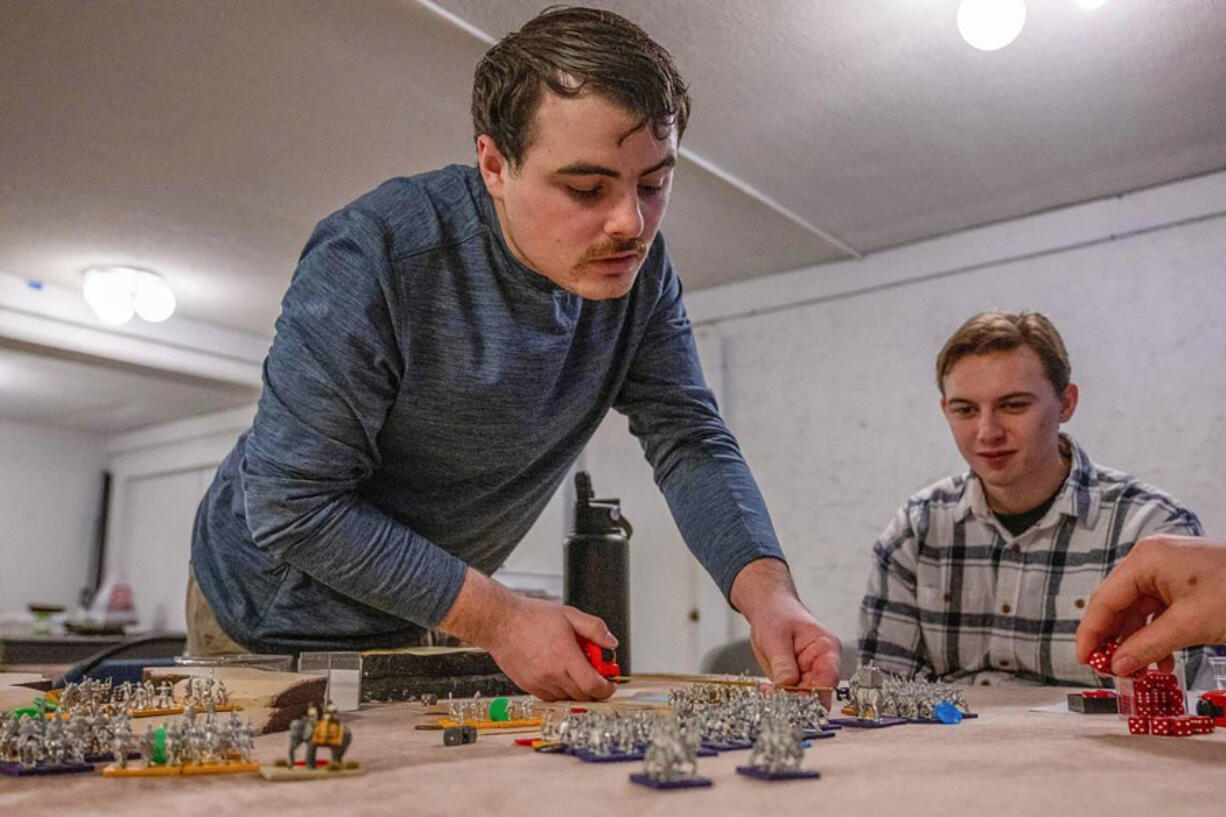BALDWIN CITY, Kan. — Outside, while dense fog and ice-packed streets created a winter of discontent, 18-year-old cheerleader Marley Battles (her name could not be more apt) was in the basement of the Baker University Alumni Center roundly kicking football player Mike Burke’s butt.
“He’s getting beat real bad,” the Overland Park, Kan., freshman said, rolling dice in a game of ancient war that, over the last 10-plus years, has proven, to the surprise of the professor, to be one of the most popular, if not the most popular, winter-term classes at this tiny Kansas college, enrollment 900 at the main campus.
Winter terms, Jan terms or interterms, as some colleges call them, are often times for relaxation. While some students at Baker have spirited away to Italy, Belize, Ecuador or the beaches of Hawaii, Battles and Burke are among 32 students lucky enough — the class often fills to capacity immediately — to be leading their own mini-armies with some 250 toy soldiers (each standing less than inch tall) thrashing each other across tables on felt battlefields.
At Battles and Burke’s table, her fourth century archers — Greuthungi warriors from what is now Ukraine — are raining hell on Burke’s woebegone Carpi soldiers, part of the Dacian tribe from what’s now Romania.



